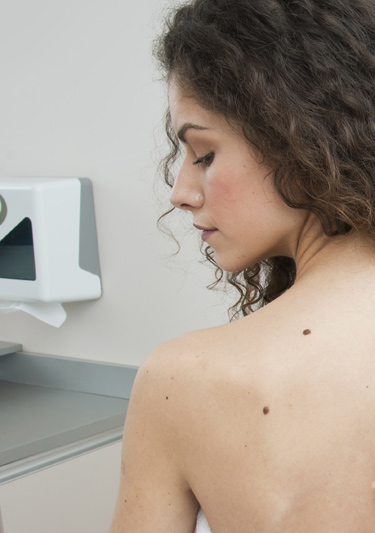Most Of Us Carry Neanderthal Genes
Apparently about 50,000 years ago, a few amorous Homo sapiens gazed across the campfire at a few receptive Neanderthals and decided to mix genetic material. Out of all the early humanoids to walk this earth, we are the only surviving species. The prospect of interbreeding between the two species has long been debated and subject of science fiction. But now we have proof that not only did interspecies breeding occur, but most of us carry Neanderthal genes. In fact every time you look in the mirror, more Neanderthal than Homo sapien may be looking back.

If your ancestors came from Asia or Europe, up to 3% of your total genome is now known to be Neanderthal. If your ancestors are purely sub-Saharan African, you have little to no Neanderthal DNA; as your ancestors did not migrate out of Africa into Eurasia (where Neanderthals roamed). Historical genetic sleuths have constructed models that suggest as little as 300 incidences of interbreeding 50,000 years ago account for the ubiquitous mixed genes. These genes were amplified over subsequent millenia. Life is the ultimate pyramid scheme after all.
Neanderthal DNA In Human Skin
So why is a dermatologist concerned with this? Because of that small 1-3 percentage, around 70% is expressed in your skin. As one researcher put it, "Neanderthal DNA in your skin punches above its weight class." Human skin is rich in Neanderthal DNA and it primarily codes for a thing called keratin. Keratin is the fibrous protein that makes up our skin, hair, and nails. It is the basic building block of these structures and quite strong (a rhinoceros horn is made out of keratin also). It is theorized that the Neanderthals’ genes for paler skin offered an advantage for generating vitamin D from sunlight in comparison to the darker African skin tones at higher latitudes. The idea proposed is that Eurasians owe their lighter skin tones partially to these interspecies trysts. And since Neanderthals were well-adapted to brutishly chilly environments other beneficial skin adaptations will likely be identified.
Neanderthal DNA Affects Health
Geneticists are discovering that not all the Neanderthal genes are beneficial. Some gene correlations with diabetes, crohn’s disease, lupus, and even the ability to stop smoking may be evolutionary Neanderthal stowaways.
So what does it mean to be human? If you identify as Eurasia, you are a mutt of Homo sapiens, Neanderthal and … well who knows? If you are Native American you still have about the same amount of Neanderthal, as the frolicking went down way before human migration to the Western hemisphere. We humans love to mate. And chances are if we were cozying up with Neanderthals, we were also having some hanky-panky with other early humanoid species as well. Another close ancestor of modern humans and Neanderthals, named Denisovans, make up as much as 6% of the DNA in Oceanic cultures today. But not even sub-Saharan Africans can claim "pure" Homo sapiens status. There is emerging evidence of interbreeding across all Homo sapiens with other early archaic branches of the human family tree. These examples are probably just scratching the surface of with who, and what, our ancestors mixed. Sexual behavior is biologically fundamental to who we are. After all, everyone reading this descends from thousands of years of beings who decided to have lots of sex–otherwise the lifeguard kicks you out of the genepool.

What About Those Skin Growths?
Ever wonder about all those silly little skin tags, lumps, and barnacles you make? Has a dermatologist ever really given you a good answer as to why we grow them? We don’t know when it comes right down to it. As benign growths they usually warrant little attention of researchers and doctors. We just accept them as part of growing older. But upon learning of how much of our skin is Neanderthal in origin, I cannot help but to now ponder upon the true origins of these growths. Skin is your interface with the world around you. Perhaps these seemingly insignificant growths once represented something more? Perhaps they served a function 100,000 years ago and now linger as so-called vestigial appendages? How fun would it be to someday learn that the unsightly barnacle on your face was once a sign of virility? Or even divinity? Imagine early Homo sapiens vying to procreate with those individual Neanderthals covered in barnacles. Or could many of these marks have never even existed before in either species? Possibly they represent a visible manifestation of a genetic mismatch or mutation? There are many so-called "mosaic" patterns in human skin where multiple genetic cell lines exist where ideally there should be one. These mosaics give rise to bizarre wavy and whorled skin growths that give people a marbled skin appearance. We see these commonly in patients yet the mystery they represent often goes unappreciated.
I spent three years in residency learning volumes about the protein keratin and myriad are the skin diseases that have their origin in keratin dysfunctions. How many of these diseases are Neanderthal based? It may not matter in the end. But in the increasingly technological barbarism in the realm modern of medicine, pondering questions like these is akin to gazing into the starlit night sky.

